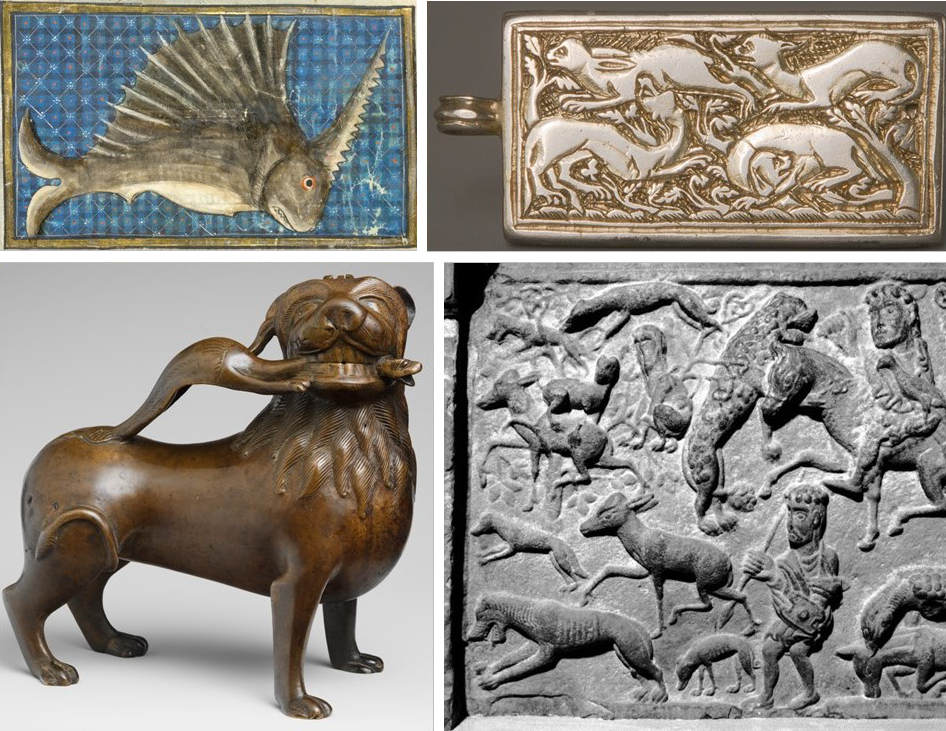Special Topics: Medieval Animals — Introduction to Medieval Visual Art and Material Culture

Stone lions guarding building entrances; fantastic creatures carved into furniture; animal fables told in metalwork and illustrated books; boxes made of whale bone: Animals are present in virtually every form of medieval art. Our focus in this course is on medieval Europe from 500 to 1500 and the role played by animals in the production of visual and material culture. With an emphasis on recurring themes, lectures will explore the period by prioritizing images of animals and studying their meaning, as well as asking how animal products and technologies shaped medieval culture. This offers insights into different aspects of medieval society: networks of trade, cross-cultural relations, conceptions of the cosmos, and practices of gift-giving involve animals and art objects alike. At the same time, the topic of animals addresses basic distinctions in art history, such as distinguishing ornamental from narrative imagery, or images we can read from those we cannot decode. We will consider the complex signifying work animal imagery performed in multiple domains of medieval visual culture: the ornamental, the symbolic, the iconographic, the narrative, the moral, and the comic. Along the way, we will also examine some of our contemporary society's approaches towards animals and visuality.
Textbooks/Other Materials: All materials will be on Canvas.Useful accompanying textbooks: Thompson/Harris, Medieval Art 250-1450: Matter, Making, and Meaning, Oxford University Press 2021; Caskey/Cohen/Safran, Art and Architecture of the Middle Ages: Exploring a Connected World, Cornell University Press 2022.
Intended Audience: Undergraduates. No previous knowledge of medieval art required. All welcome.
Class Format: Two 80-minute lectures with 1/3 of that time in-class group discussions and tasks.
Estimated Cost of Materials: 0-50
HISTART Concentration Distributions: Europe and the US, Medieval